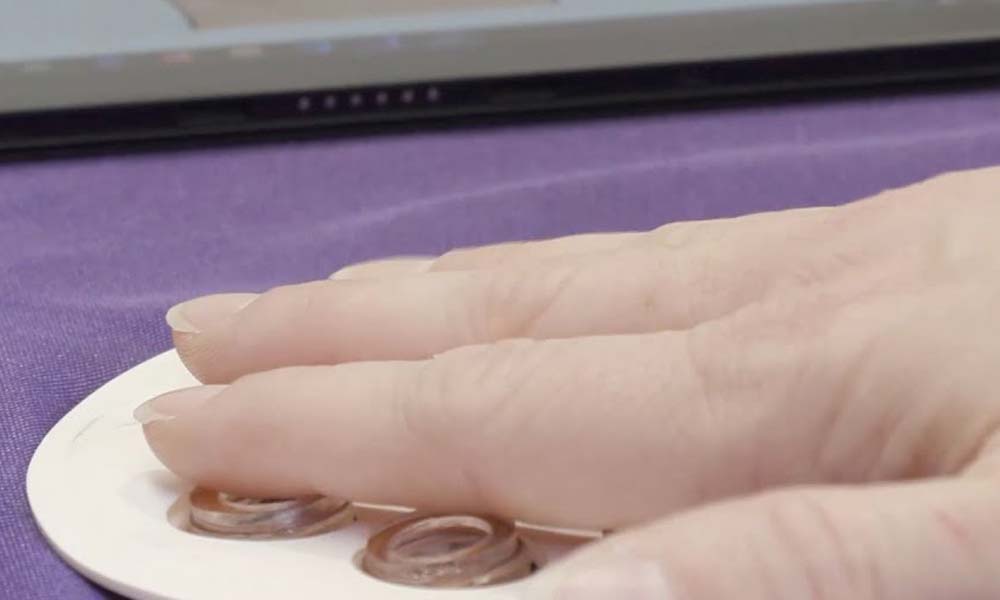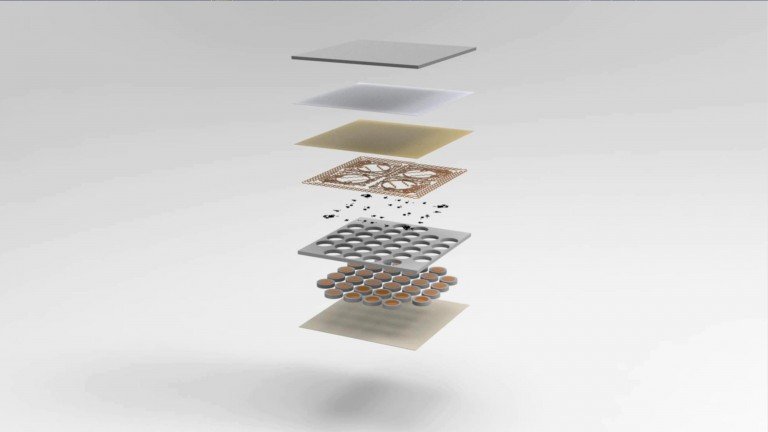Sensor-Packed Artificial Skin Provides Palpable Sensation in AR and VR
The audiovisual experience in virtual reality is now fairly well developed, delivering impeccable immersion to end users. In tandem with the developments in VR hardware and the app and games ecosystem has been the development of peripheral virtual reality experience such as olfaction and haptics. Both are geared towards fortifying VR ecosystem and will be instrumental in adding a degree of realism to the technology and taking it to the mainstream.
As developers pursue more immersion and realism, haptics is shaping up to be the next big thing in virtual reality. The haptic experiences are seeing the best promise with lots of implementations and possibilities now in existence. A few of these are fairly practical while others are still in the research phase.

The latest haptic innovation is one by researchers from Northwestern University and the Hong Kong Polytechnic University who are working together on an artificial skin for both virtual reality and augmented reality. How does this innovation work? A paper on the artificial haptic skin describes the development of a multilayered material that incorporates sensors, a chip as well as actuators which make it possible for the wearer to feel the mechanical vibrations through their skins.
The touch sensation is transmitted by tapping areas on the touch screen and the corresponding areas on the skin will vibrate in real time in response to the touch sensation. The artificial skin is wireless and does not need any batteries as it is loaded through inductive charging, the same technology that is also used to charge smartphones wirelessly.

According to the article in the Nature journal, the artificial skin will consist of multiple layers of silicone. Between these silicone layers will be installed chips, sensors and actuators.
A suit, a glove or a vest?
Up to now, the VR implementations have taken any of these three forms. This latest haptic technology implementation with the artificial skin includes individual sensors that can be selectively controlled through a touch screen. This, in turn, causes the skin to react in real-time with vibrations at the corresponding point.
The researchers have planned that the haptic skin be compatible with many programs. In a video game, for example, the enemy hits could be accurately simulated at the corresponding body location.
Outside VR gaming and entertainment, the artificial skin could also be used in social interactions through electronic devices which can be felt by the user’s movements on the opposite end.
These artificial skins could one day be used to enable people to physically communicate from a distance. A parent could, for instance, hold a child in virtual reality from a long-distance video call.
The haptic technology could also enable VR video gamers to feel the strikes when they are playing or provide users that have prosthetic arms with a better sensation of the shape of the objects that they are holding with their prosthetic arms.
The artificial skin haptic technology could also be implemented as a body suit as well as for certain body parts.
In spite of the initial hype, virtual reality hasn’t really lived up to early predictions. It is still not a mainstream technology and has only a few millions of users. The growth has been hampered by several factors, including the pace of innovation and the lack of popular and indispensable use-cases that could draw in tens of millions of users. However, the development of peripheral technologies help enrichen the VR ecosystem and expand the scope of VR applications.
There are already several projects in haptic XR
There are already several ongoing projects in haptic XR, some of which have gone to full application. One of the most recent haptic innovations was the unveiling of a similar Silicone haptic skin which was developed by researchers from the University of Lausanne. That haptic skin triggers stimuli through air bubbles that are rapidly inflated by compressed air.
https://virtualrealitytimes.com/2019/11/30/sensor-packed-artificial-skin-provides-palpable-sensation-in-ar-and-vr/https://virtualrealitytimes.com/wp-content/uploads/2019/11/Haptic-Artificial-Skin-for-VR-and-AR-600x360.jpghttps://virtualrealitytimes.com/wp-content/uploads/2019/11/Haptic-Artificial-Skin-for-VR-and-AR-150x90.jpgHapticsHardwareInventionsTechnologyThe audiovisual experience in virtual reality is now fairly well developed, delivering impeccable immersion to end users. In tandem with the developments in VR hardware and the app and games ecosystem has been the development of peripheral virtual reality experience such as olfaction and haptics. Both are geared towards...Sam OchanjiSam Ochanji[email protected]EditorVirtual Reality Times - Metaverse & VR
